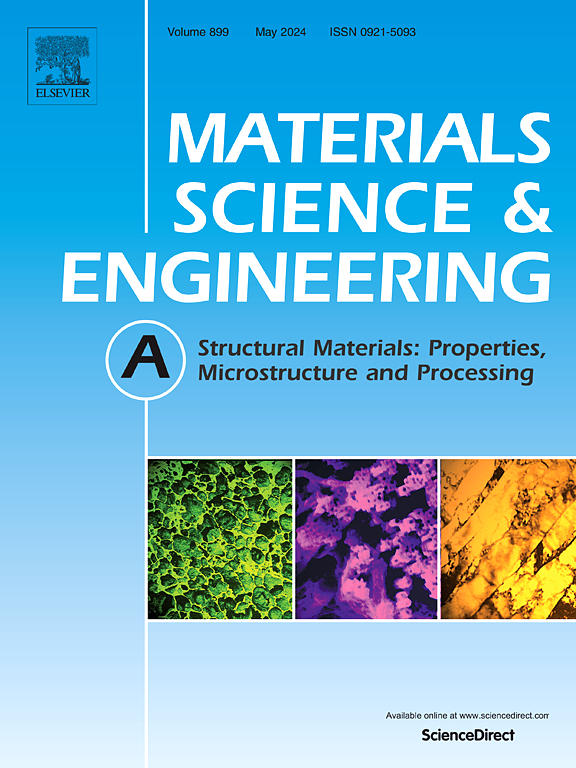揭示锡在Cu-Zr合金中的作用:对组织演变和性能调整的影响
IF 6.1
2区 材料科学
Q1 MATERIALS SCIENCE, MULTIDISCIPLINARY
引用次数: 0
摘要
本研究通过透射电子显微镜(TEM)、原子探针断层扫描(APT)和密度泛函理论(DFT)计算,全面研究了Sn添加对Cu-Zr合金显微组织和性能的影响。结果表明:在凝固过程中,添加Sn降低了Zr在固态基体中的溶解度,增加了富Zr共晶颗粒的形成,细化了铸态0.3Sn掺杂合金的晶粒;在等时时效过程中,Sn对富zr析出物的影响随温度的变化而变化。在较低温度下(300 ~ 350℃),Sn促进富zr相的析出,而在较高温度下(400 ~ 450℃),Sn加速富zr相的生长。DFT模拟表明,Sn原子优先偏析到Cu/析出相界面的Cu侧,有利于形成核壳结构的析出相,而不会有效阻碍析出相的生长。在电导率方面,随着时效温度的升高,掺杂0.3 sn与不掺杂sn合金的电导率差异先减小后增大。这与富zr析出相上Sn原子总偏析量的变化密切相关,而偏析量的变化与富zr析出相的尺寸和数值密度有关。这些发现为具有核壳结构的高性能Cu合金的成分设计和工艺参数优化提供了新的见解。本文章由计算机程序翻译,如有差异,请以英文原文为准。
Unveiling the role of Sn in Cu-Zr Alloys: Influence on microstructure evolution and property tuning
This study comprehensively investigated the influence of Sn addition on the microstructure and properties of Cu-Zr alloys via transmission electron microscopy (TEM), atom probe tomography (APT), along with density functional theory (DFT) calculations. The results indicate that Sn addition reduces the solubility of Zr in the solid-state matrix during solidification, increasing the formation of Zr-rich eutectic particles and refining the grains of the as-cast 0.3Sn-doped alloy. During isochronal aging, the influence of Sn on Zr-rich precipitates varies with temperature. At lower temperatures (300–350 °C), Sn promotes the precipitation of Zr-rich precipitates while at higher temperatures (400–450 °C), Sn accelerates the growth of Zr-rich precipitates. DFT simulations show that Sn atoms preferentially segregate to the Cu side of the Cu/precipitate interfaces, facilitating the formation of core-shell structured precipitates without effectively impeding precipitate growth. Regarding electric conductivity, the difference between the 0.3Sn-doped and Sn-free alloys initially decreases and then increases with rising aging temperature. This is closely related to the change in the total segregation amount of Sn atoms on Zr-rich precipitates, which is associated with the size and numerical density of these precipitates. These findings offer novel insights for the composition design and processing parameter optimization of high-performance Cu alloys with core-shell structured precipitates.
求助全文
通过发布文献求助,成功后即可免费获取论文全文。
去求助
来源期刊

Materials Science and Engineering: A
工程技术-材料科学:综合
CiteScore
11.50
自引率
15.60%
发文量
1811
审稿时长
31 days
期刊介绍:
Materials Science and Engineering A provides an international medium for the publication of theoretical and experimental studies related to the load-bearing capacity of materials as influenced by their basic properties, processing history, microstructure and operating environment. Appropriate submissions to Materials Science and Engineering A should include scientific and/or engineering factors which affect the microstructure - strength relationships of materials and report the changes to mechanical behavior.
 求助内容:
求助内容: 应助结果提醒方式:
应助结果提醒方式:


